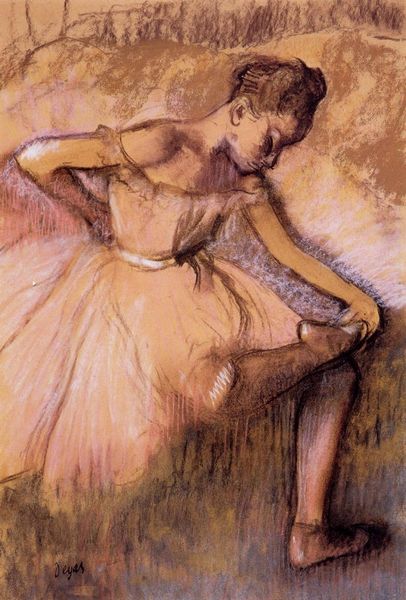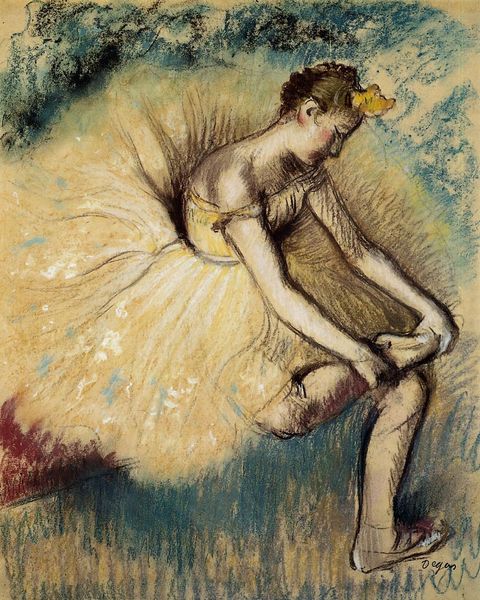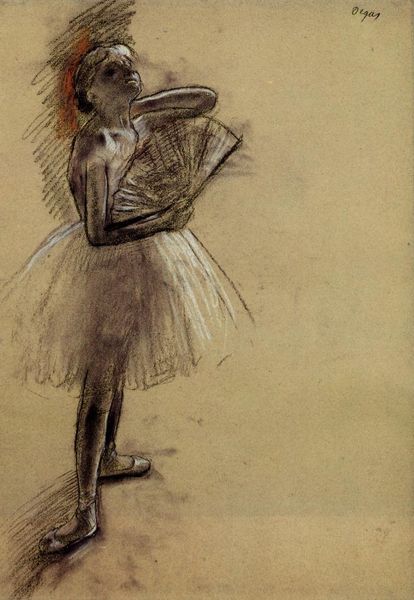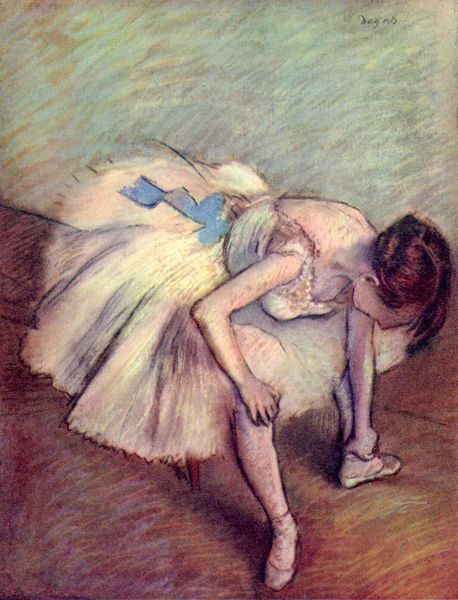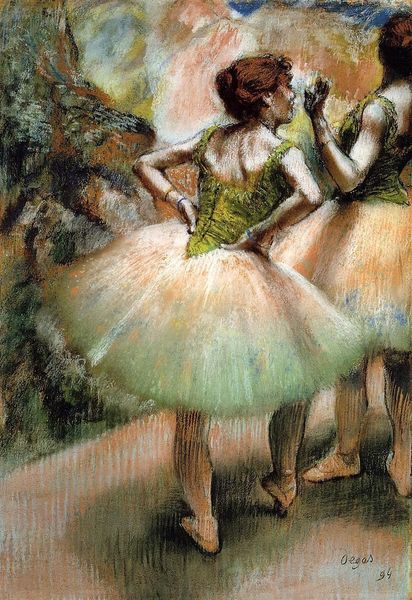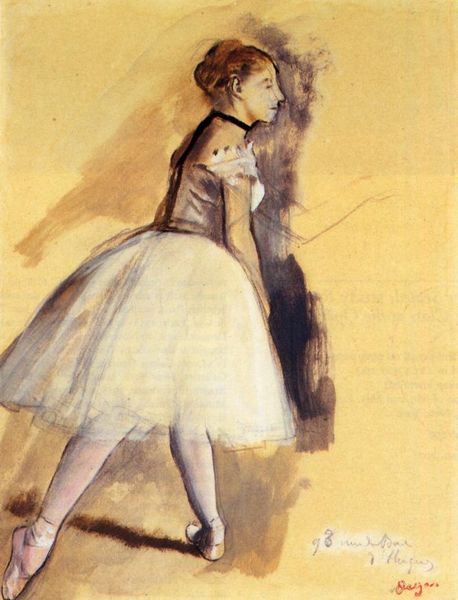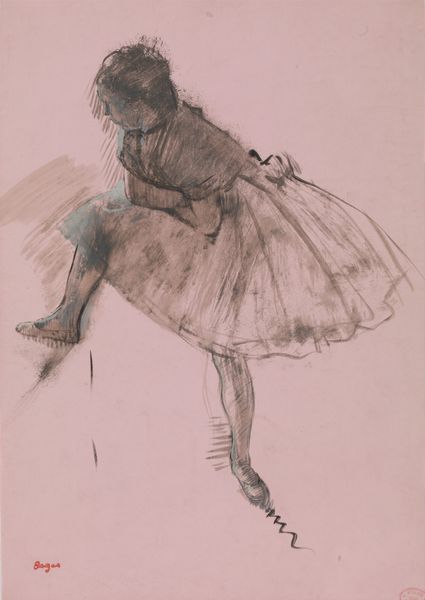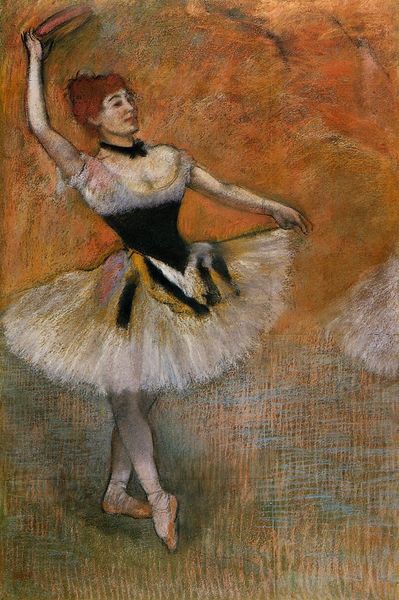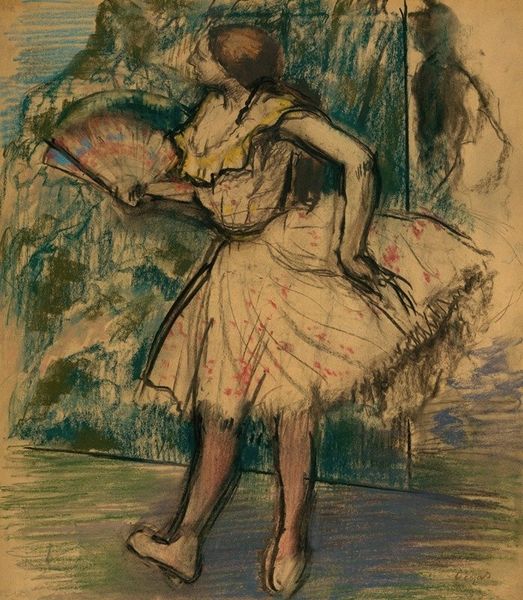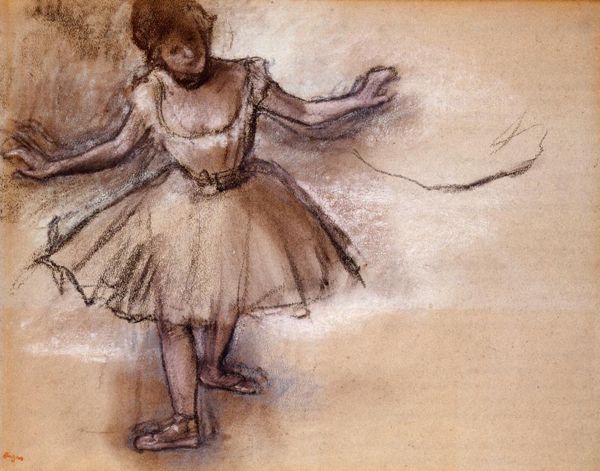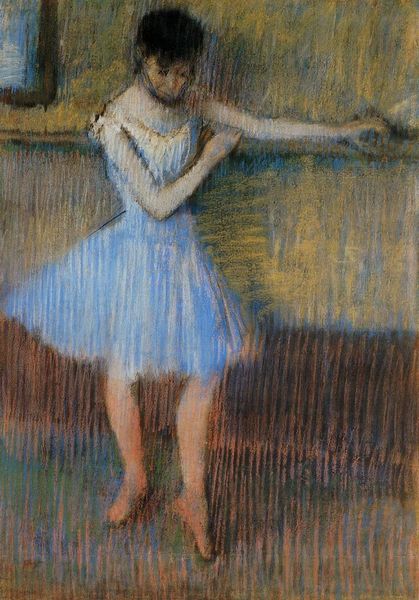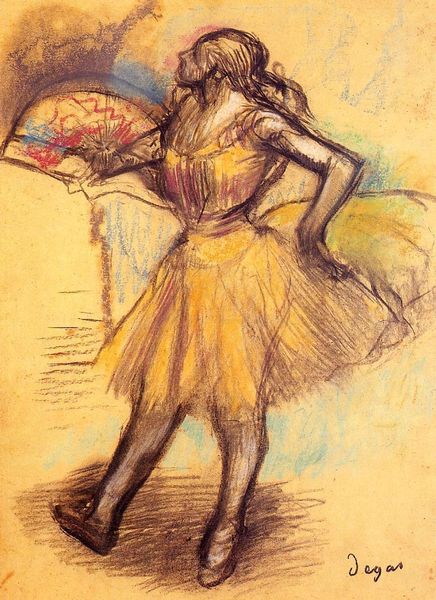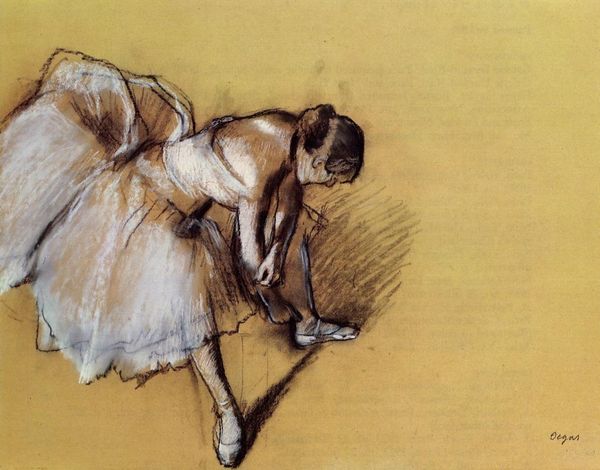
drawing, pastel
#
portrait
#
drawing
#
impressionism
#
landscape
#
figuration
#
oil painting
#
france
#
genre-painting
#
pastel
#
nude
#
watercolor
Copyright: Public domain
Curator: Let's delve into Edgar Degas' "Dancer at the Barre," a pastel drawing from 1888. It offers a compelling glimpse into his favoured subject matter. Editor: Immediately, I feel this intense stillness, almost a held breath, doesn't it? The colours, even with the movement implied by the pose, are so muted, so very internalized. Curator: That's interesting, because Degas was very invested in capturing modern life, especially scenes of labour, leisure, and the unique demands placed on women's bodies, like those of ballerinas. Editor: Labour, definitely. But there's something so solitary about her effort. It's not just the physical strain we see, but almost a sense of private discipline. I almost hear her internal pep talk going in her head! Curator: Precisely. If you examine the composition closely, we're placed as viewers in a very specific position –one of partial voyeurism and engagement with the artist's broader perspectives of class and labour at the time. Degas' representation is complex because it underscores the grueling preparation these dancers underwent, yet also the aesthetic pleasure they provide. How do you think that is displayed within the piece? Editor: It’s that push and pull between the reality of hard work and the dreamy presentation of it all, I think it has to be those lines that really stand out for me, so delicate. But notice too how his medium really emphasizes the textures – you can almost feel the layers of the tulle, right? It creates this ephemeral, floating quality, that's romantic even. The way he has only shown us her back! We have to feel, we have to assume. Curator: Right, her averted gaze avoids direct confrontation, instead channeling the period's gendered dynamics and our own acts of looking and interpretation, as she takes her position at the bar. The choice of pastel, allowing for those soft lines you're drawn to, further underscores a feminine aesthetic, perhaps intentionally complicating the picture even further. Editor: Definitely. Art, like ballet, is always saying one thing on the surface and something deeper just under the surface, whispering to our souls. It has been a genuine gift, really feeling those nuances anew! Curator: Absolutely, Edgar Degas really offers an intersectional exploration within the societal context that defined that time. These themes still permeate the world around us today.
Comments
No comments
Be the first to comment and join the conversation on the ultimate creative platform.
